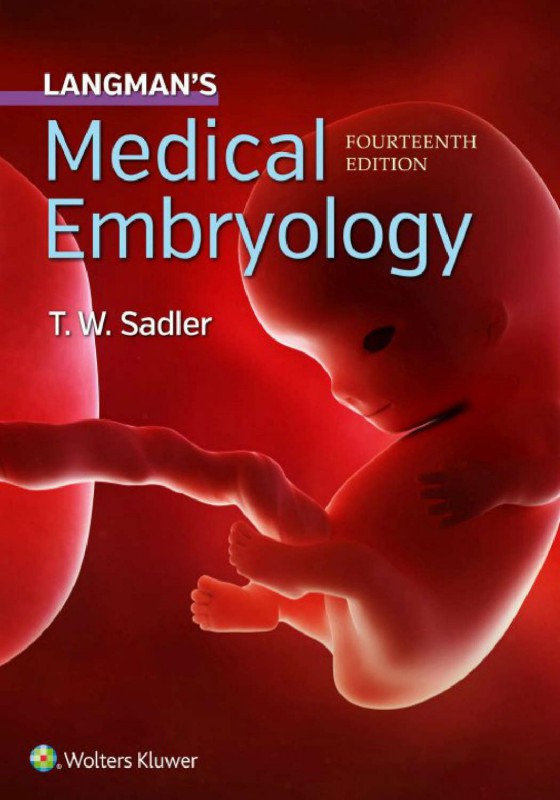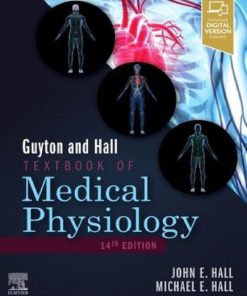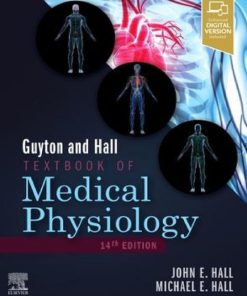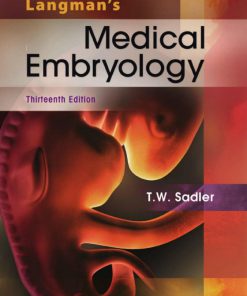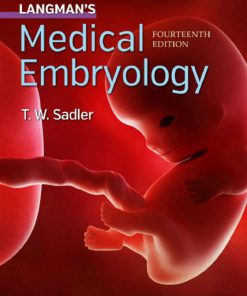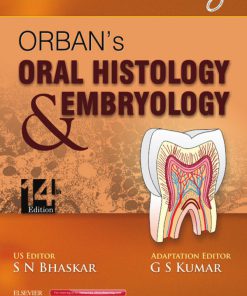Langman Medical Embryology 14th Edition by TW Sadler ISBN 1496383931 9781496383938
$50.00 Original price was: $50.00.$25.00Current price is: $25.00.
Authors:T. W. Sadler , Series:Anatomy [323] , Tags:Medical; Embryology , Author sort:Sadler, T. W. , Ids:Google; 9781496383921 , Languages:Languages:eng , Published:Published:Sep 2018 , Publisher:Wolters Kluwer Health , Comments:Comments:Publisher’s Note: Products purchased from 3rd Party sellers are not guaranteed by the Publisher for quality, authenticity, or access to any online entitlements included with the product. Vibrantly illustrated with full-color diagrams and clinical images, Langman’s Medical Embryology, Fourteenth Edition helps medical, nursing, and health professions students confidently develop a basic understanding of embryology and its clinical relevance. Concise chapter summaries, captivating clinical correlates boxes, clinical problems, and a clear, concise writing style make the subject matter accessible and engaging to students throughout their courses.
Langman Medical Embryology 14th Edition by TW Sadler – Ebook PDF Instant Download/Delivery. 1496383931, 9781496383938
Full download Langman Medical Embryology 14th Edition after payment
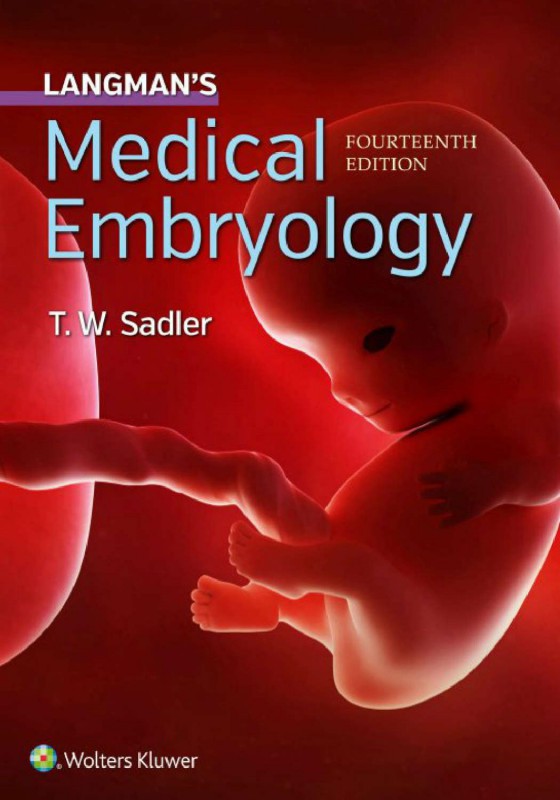
Product details:
ISBN 10: 1496383931
ISBN 13: 9781496383938
Author: TW Sadler
Publisher’s Note: Products purchased from 3rd Party sellers are not guaranteed by the Publisher for quality, authenticity, or access to any online entitlements included with the product.Vibrantly illustrated with full-color diagrams and clinical images, Langman’s Medical Embryology, Fourteenth Edition helps medical, nursing, and health professions students confidently develop a basic understanding of embryology and its clinical relevance. Concise chapter summaries, captivating clinical correlates boxes, clinical problems, and a clear, concise writing style make the subject matter accessible and engaging to students throughout their courses.
Langman Medical Embryology 14th Table of contents:
Part 1 • General Embryology
Chapter 1 • Introduction to Molecular Regulation and Signaling
Gene Transcription
DNA Methylation Represses Transcription
Other Regulators of Gene Expression
Induction and Organ Formation
Cell Signaling
Signal Transduction Pathways
Paracrine Signaling
Juxtacrine Signaling
Paracrine Signaling Factors
Fibroblast Growth Factors
Hedgehog Proteins
WNT Proteins
The TGF-β Superfamily
Other Paracrine Signaling Molecules
Key Signaling Pathways for Development
Sonic Hedgehog: Master Gene for Embryogenesis
The Planar Cell Polarity: Convergent Extension Pathway
The Notch Pathway
Summary
Chapter 2 • Gametogenesis: Conversion of Germ Cells into Male and Female Gametes
Primordial Germ Cells
The Chromosome Theory of Inheritance
Mitosis
Meiosis
Crossover
Polar Bodies
Morphological Changes during Maturation of the Gametes
Oogenesis
Maturation of Oocytes Begins Before Birth
Maturation of Oocytes Continues at Puberty
Spermatogenesis
Maturation of Sperm Begins at Puberty
Spermiogenesis
Summary
Chapter 3 • First Week of Development: Ovulation to Implantation
Ovarian Cycle
Ovulation
Corpus Luteum
Oocyte Transport
Corpus Albicans
Fertilization
Phase 1: Penetration of the Corona Radiata
Phase 2: Penetration of the Zona Pellucida
Phase 3: Fusion of the Oocyte and Sperm Cell Membranes
Cleavage
Blastocyst Formation
Epiblast, Hypoblast, and Axis Formation
Uterus at Time of Implantation
Summary
Chapter 4 • Second Week of Development: Bilaminar Germ Disc
Day 8
Day 9
Days 11 and 12
Day 13
Summary
Chapter 5 • Third Week of Development: Trilaminar Germ Disc
Gastrulation: Formation of Embryonic Mesoderm and Endoderm
Formation of the Notochord
Establishment of the Body Axes
Fate Map Established during Gastrulation
Growth of the Embryonic Disc
Further Development of the Trophoblast
Summary
Chapter 6 • Third to Eighth Weeks: The Embryonic Period
Derivatives of the Ectodermal Germ Layer
Molecular Regulation of Neural Induction
Neurulation
Neural Crest Cells
Molecular Regulation of Neural Crest Induction
Derivatives of the Mesodermal Germ Layer
Paraxial Mesoderm
Molecular Regulation of Somite Formation
Somite Differentiation
Molecular Regulation of Somite Differentiation
Intermediate Mesoderm
Lateral Plate Mesoderm
Blood and Blood Vessels
Molecular Regulation of Blood Vessel Formation
Derivatives of the Endodermal Germ Layer
Patterning of the Anteroposterior Axis: Regulation by Homeobox Genes
External Appearance during the Second Month
Summary
Chapter 7 • The Gut Tube and the Body Cavities
A Tube on Top of a Tube
Formation of the Body Cavity
Serous Membranes
Diaphragm and Thoracic Cavity
Formation of the Diaphragm
Summary
Chapter 8 • Third Month to Birth: The Fetus and Placenta
Development of the Fetus
Monthly Changes
Time of Birth
Fetal Membranes and Placenta
Changes in the Trophoblast
Chorion Frondosum and Decidua Basalis
Structure of the Placenta
Full-Term Placenta
Circulation of the Placenta
Function of the Placenta
Exchange of Gases
Exchange of Nutrients and Electrolytes
Transmission of Maternal Antibodies
Hormone Production
Amnion and Umbilical Cord
Placental Changes at the End of Pregnancy
Amniotic Fluid
Fetal Membranes in Twins
Dizygotic Twins
Monozygotic Twins
Parturition (Birth)
Summary
Chapter 9 • Birth Defects and Prenatal Diagnosis
Birth Defects
Types of Abnormalities
Environmental Factors
Principles of Teratology
Infectious Agents
Other Viral Infections and Hyperthermia
Radiation
Pharmaceutical Drugs and Chemical Agents
Illicit Drugs, Alcohol, and Cigarettes
Hormones
In Vitro Fertilization
Maternal Disease
Nutritional Deficiencies
Obesity
Hypoxia
Heavy Metals
Male-Mediated Teratogenesis
Prenatal Diagnosis
Ultrasonography
Amniocentesis
Chorionic Villus Sampling
Cordocentesis or Percutaneous Umbilical Blood Sampling
Maternal Serum Screening
Noninvasive Prenatal Screening
Fetal Therapy
Fetal Transfusion
Fetal Medical Treatment
Fetal Surgery
Stem Cell Transplantation and Gene Therapy
Summary
Part 2 • Systems-Based Embryology
Chapter 10 • The Axial Skeleton
Skull
Neurocranium
Membranous Neurocranium
Newborn Skull
Cartilaginous Neurocranium or Chondrocranium
Viscerocranium
Vertebrae and the Vertebral Column
Ribs and Sternum
Summary
Chapter 11 • Muscular System
Striated Skeletal Musculature
Innervation of Axial Skeletal Muscles
Skeletal Muscle and Tendons
Molecular Regulation of Muscle Development
Patterning of Muscles
Head Musculature
Limb Musculature
Cardiac Muscle
Smooth Muscle
Summary
Chapter 12 • Limbs
Limb Growth and Development
Limb Musculature
Molecular Regulation of Limb Development
Summary
Chapter 13 • Cardiovascular System
Establishment and Patterning of the Primary Heart Field
Formation and Position of the Heart Tube
Formation of the Cardiac Loop
Molecular Regulation of Cardiac Development
Development of the Sinus Venosus
Formation of the Cardiac Septa
Septum Formation in the Common Atrium
Formation of the Left Atrium and Pulmonary Vein
Septum Formation in the Atrioventricular Canal
Atrioventricular Valves
Septum Formation in the Truncus Arteriosus and Conus Cordis
Septum Formation in the Ventricles
Semilunar Valves
Formation of the Conducting System of the Heart
Vascular Development
Arterial System
Aortic Arches
Vitelline and Umbilical Arteries
Coronary Arteries
Venous System
Vitelline Veins
Umbilical Veins
Cardinal Veins
Circulation Before and After Birth
Fetal Circulation
Circulatory Changes at Birth
Lymphatic System
Summary
Chapter 14 • Respiratory System
Formation of the Lung Buds
Larynx
Trachea, Bronchi, and Lungs
Maturation of the Lungs
Summary
Chapter 15 • Digestive System
Divisions of the Gut Tube
Molecular Regulation of Gut Tube Development
Mesentery
Foregut
Esophagus
Stomach
Duodenum
Liver and Gallbladder
Molecular Regulation of Liver Induction
Pancreas
Molecular Regulation of Pancreas Development
Midgut
Physiological Herniation
Rotation of the Midgut
Retraction of Herniated Loops
Mesenteries of the Intestinal Loops
Hindgut
Summary
Chapter 16 • Urogenital System
Urinary System
Kidney Systems
Pronephros
Mesonephros
Metanephros: The Definitive Kidney
Collecting System
Excretory System
Molecular Regulation of Kidney Development
Position of the Kidney
Function of the Kidney
Bladder and Urethra
Genital System
Gonads
Testis
Ovary
Genital Ducts
Indifferent Stage
Genital Ducts in the Male
Genital Ducts in the Female
Molecular Regulation of Genital Duct Development
Vagina
External Genitalia
Indifferent Stage
External Genitalia in the Male
External Genitalia in the Female
Descent of the Testes
Descent of the Ovaries
Summary
Chapter 17 • Head and Neck
Pharyngeal Arches
First Pharyngeal Arch
Second Pharyngeal Arch
Third Pharyngeal Arch
Fourth and Sixth Pharyngeal Arches
Pharyngeal Pouches
First Pharyngeal Pouch
Second Pharyngeal Pouch
Third Pharyngeal Pouch
Fourth Pharyngeal Pouch
Pharyngeal Clefts
Molecular Regulation of Facial Development
Tongue
Thyroid Gland
Face
Intermaxillary Segment
Secondary Palate
Nasal Cavities
Teeth
Molecular Regulation of Tooth Development
Summary
Chapter 18 • Central Nervous System
Spinal Cord
Neuroepithelial, Mantle, and Marginal Layers
Basal, Alar, Roof, and Floor Plates
Histological Differentiation
Nerve Cells
Glial Cells
Neural Crest Cells
Spinal Nerves
Myelination
Positional Changes of the Cord
Molecular Regulation of Nerve Differentiation in the Spinal Cord
Brain
Rhombencephalon: Hindbrain
Myelencephalon
Metencephalon
Cerebellum
Mesencephalon: Midbrain
Prosencephalon: Forebrain
Diencephalon
Telencephalon
Molecular Regulation of Brain Development
Cranial Nerves
Autonomic Nervous System
Sympathetic Nervous System
Parasympathetic Nervous System
Suprarenal (Adrenal) Gland
Summary
Chapter 19 • Ear
Internal Ear
Saccule, Cochlea, and Organ of Corti
Utricle and Semicircular Canals
Middle Ear
Tympanic Cavity and Auditory Tube
Ossicles
External Ear
External Auditory Meatus
Eardrum or Tympanic Membrane
Auricle
Hearing
Summary
Chapter 20 • Eye
Optic Cup and Lens Vesicle
Retina, Iris, and Ciliary Body
Lens
Choroid, Sclera, and Cornea
Vitreous Body
Optic Nerve
Molecular Regulation of Eye Development
Summary
Chapter 21 • Integumentary System
Skin
Epidermis
Dermis
Hair
Fingernails and Toenails
Sweat Glands
Mammary Glands
Summary
Part 3 • Appendix
Answers to Problems
Figure Credits
Glossary of Key Terms
People also search for Langman Medical Embryology 14th:
langman’s medical embryology
sadler langman’s medical embryology
langman’s medical embryology 15th edition
langman’s medical embryology latest edition
langman’s medical embryology 13th edition
You may also like…
eBook PDF
Orban Oral Histology and Embryology 14th Edition by Kumar, Bhaskar ISBN 9788131245057 8131245055

